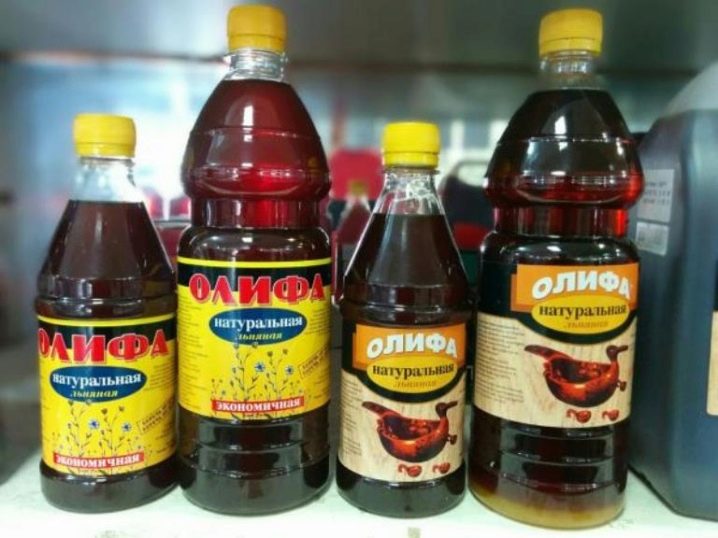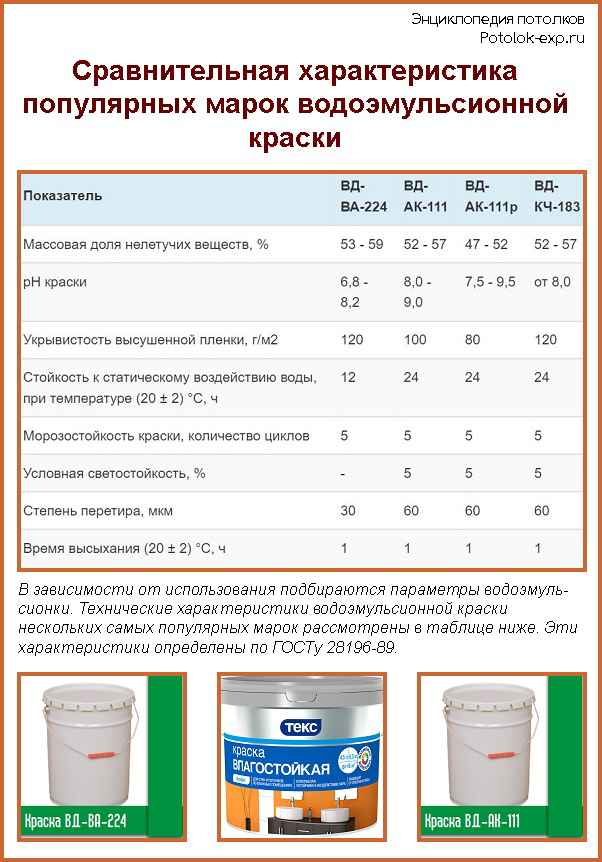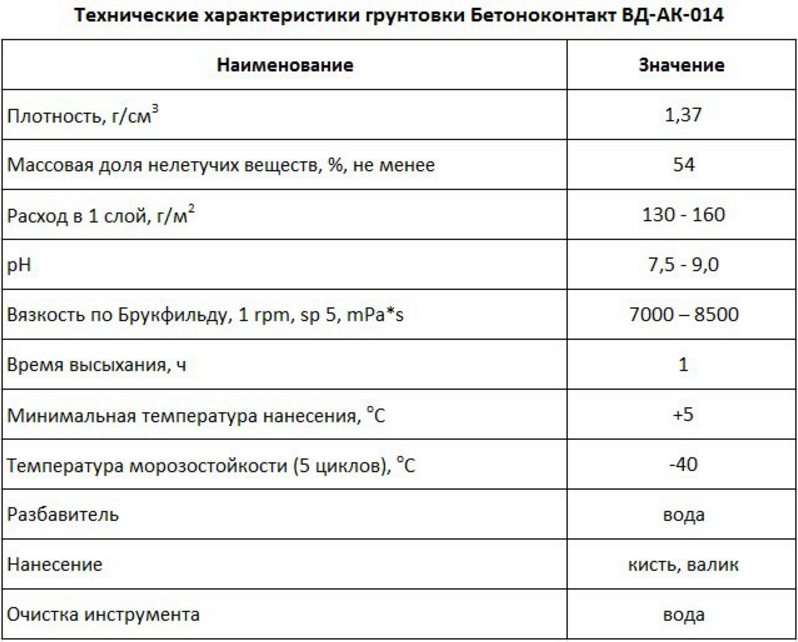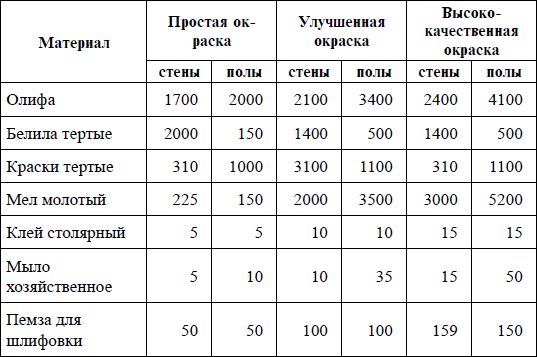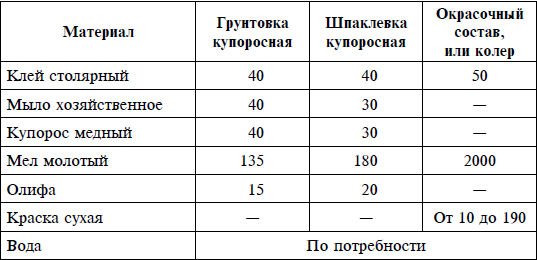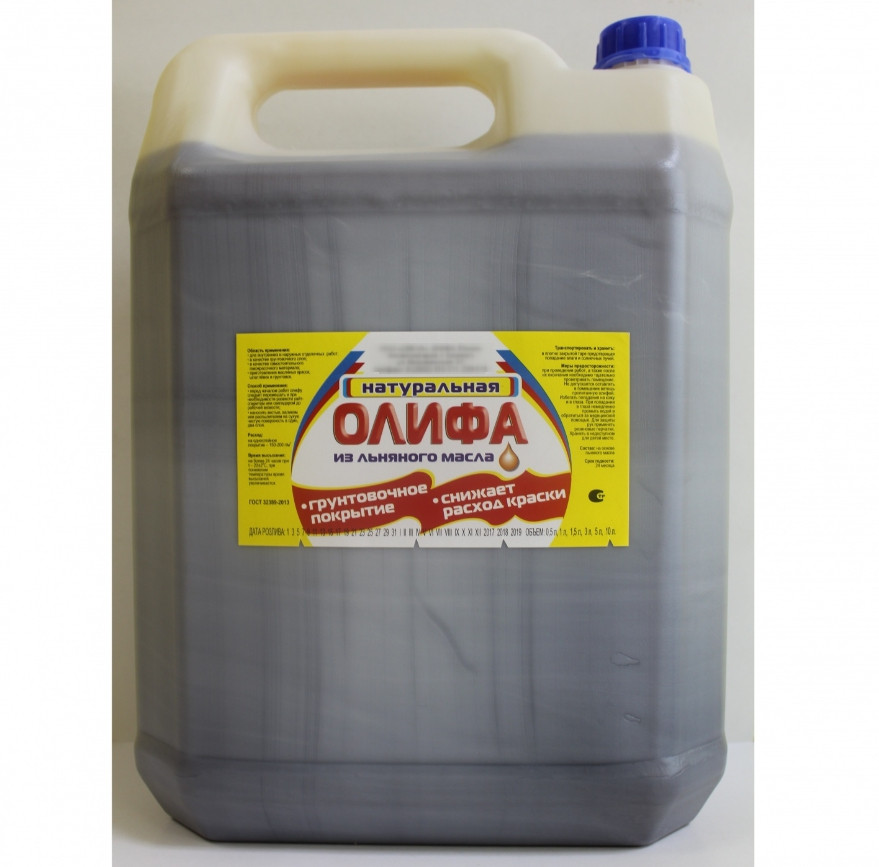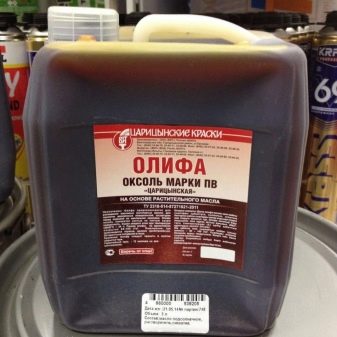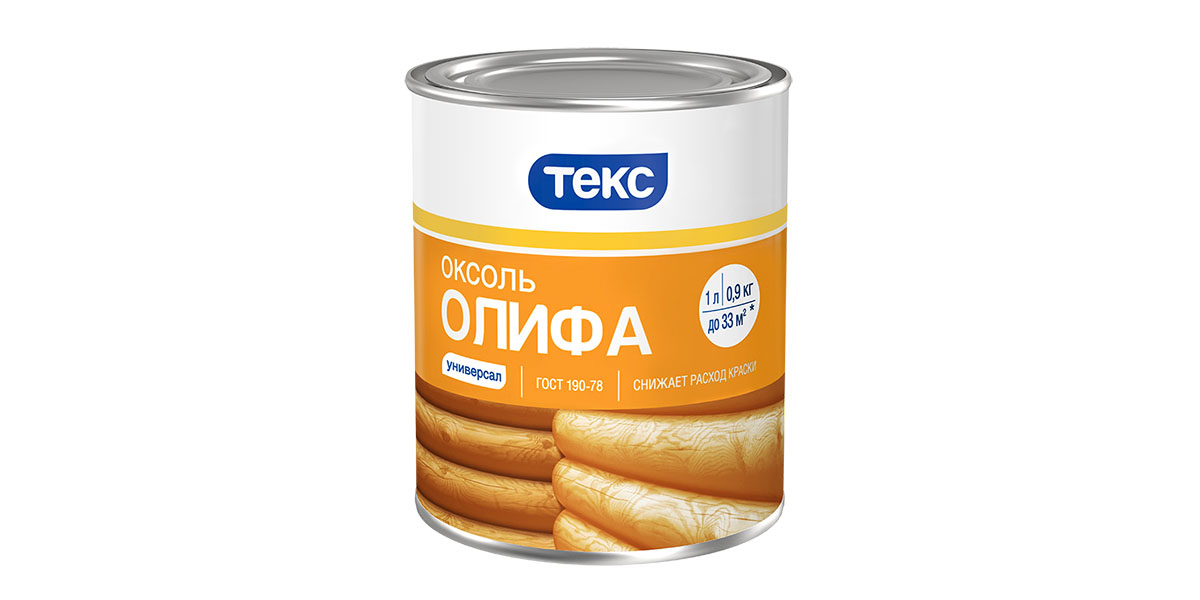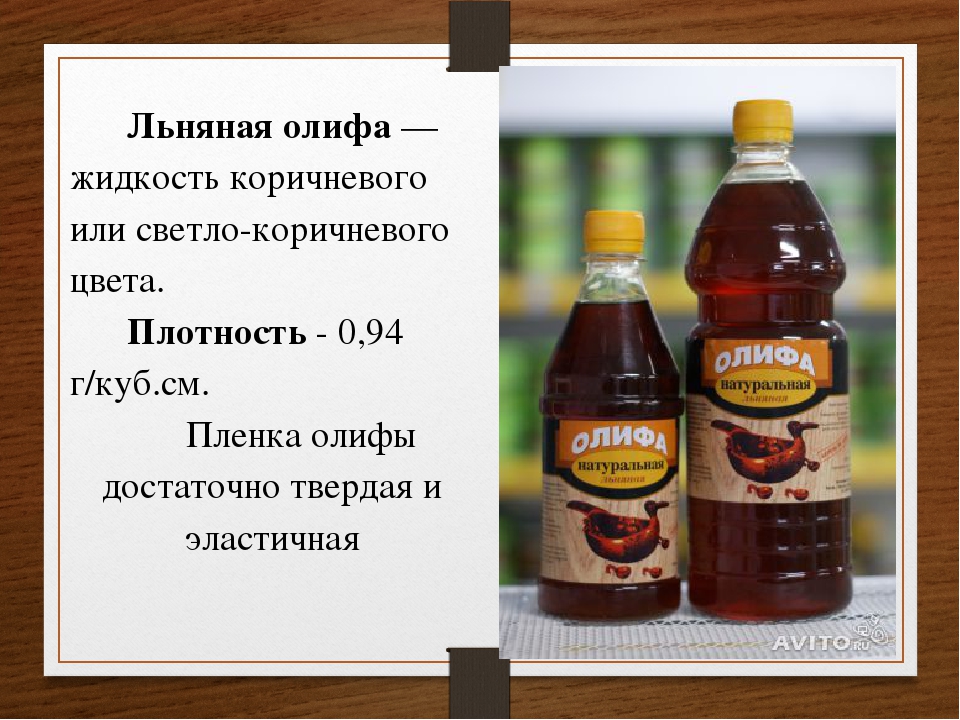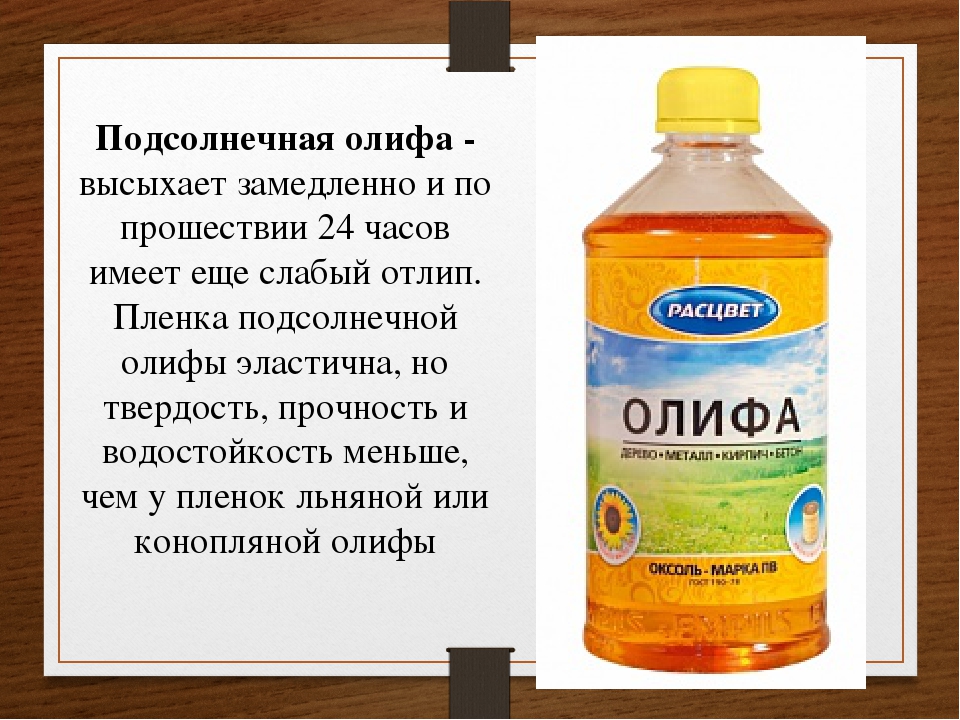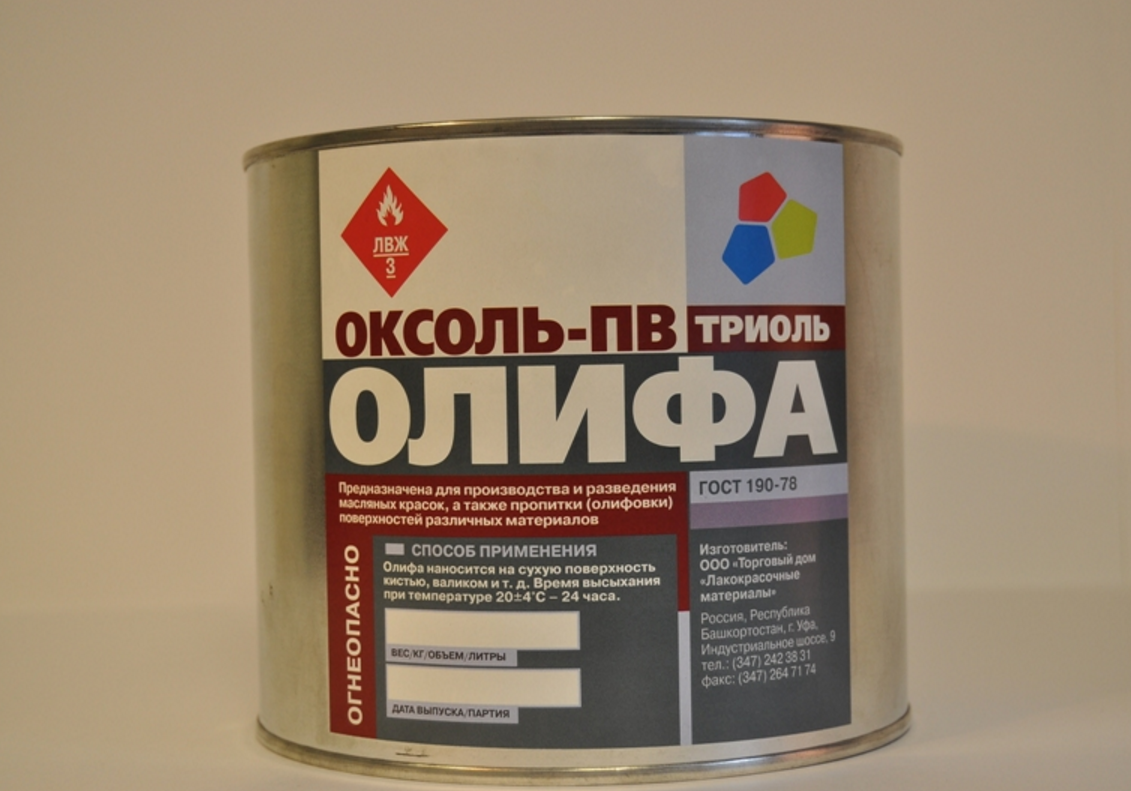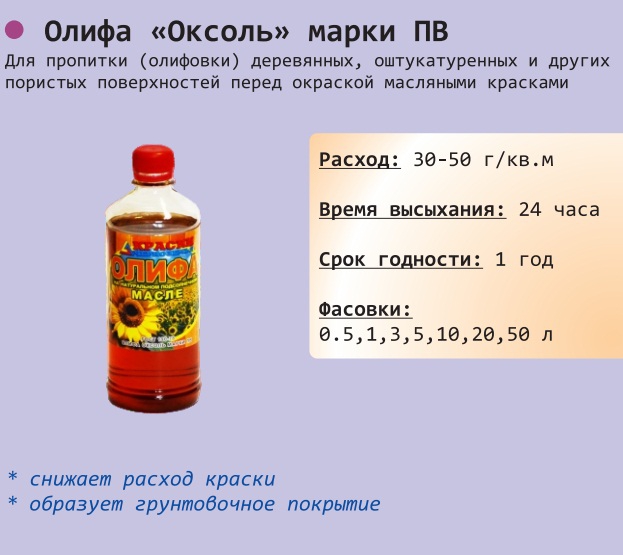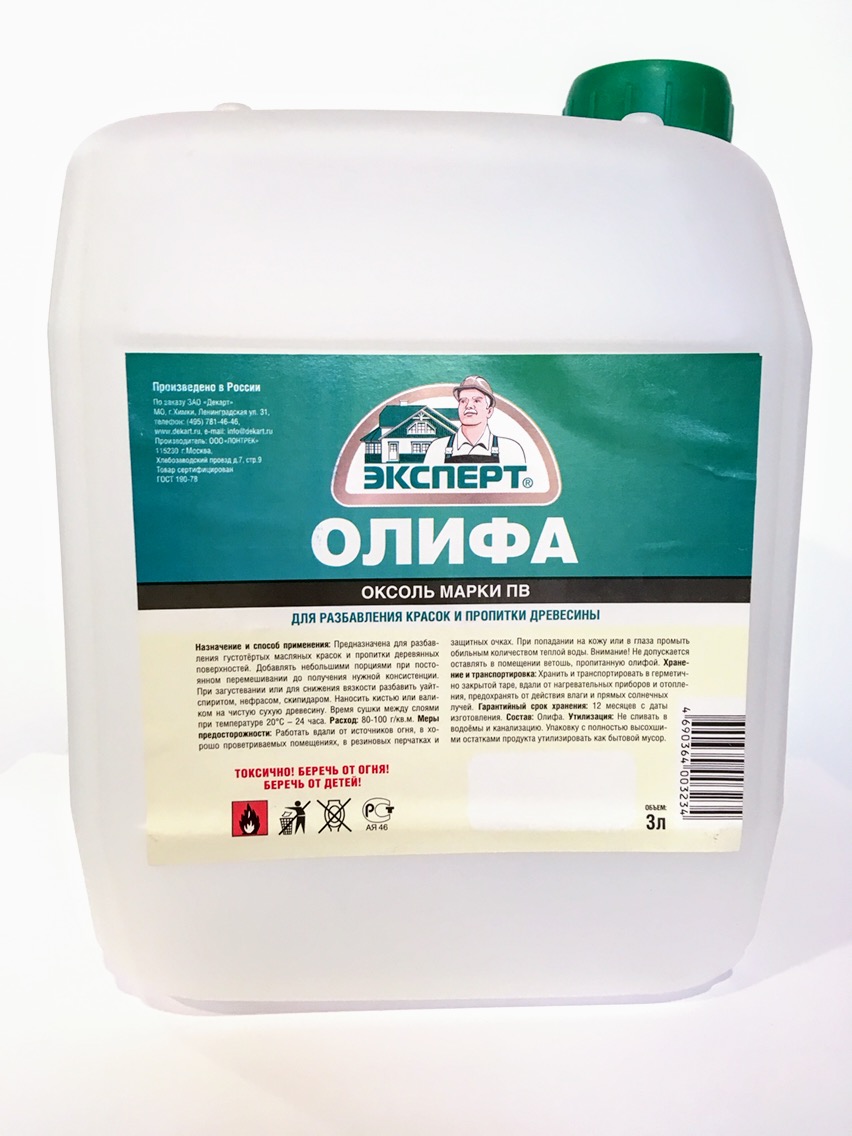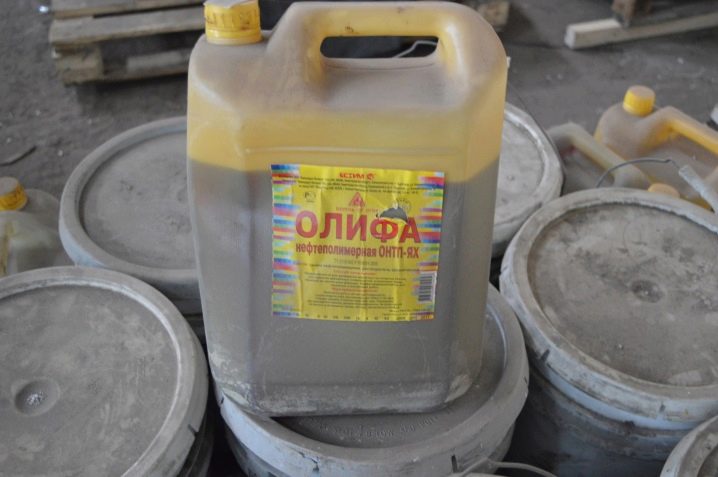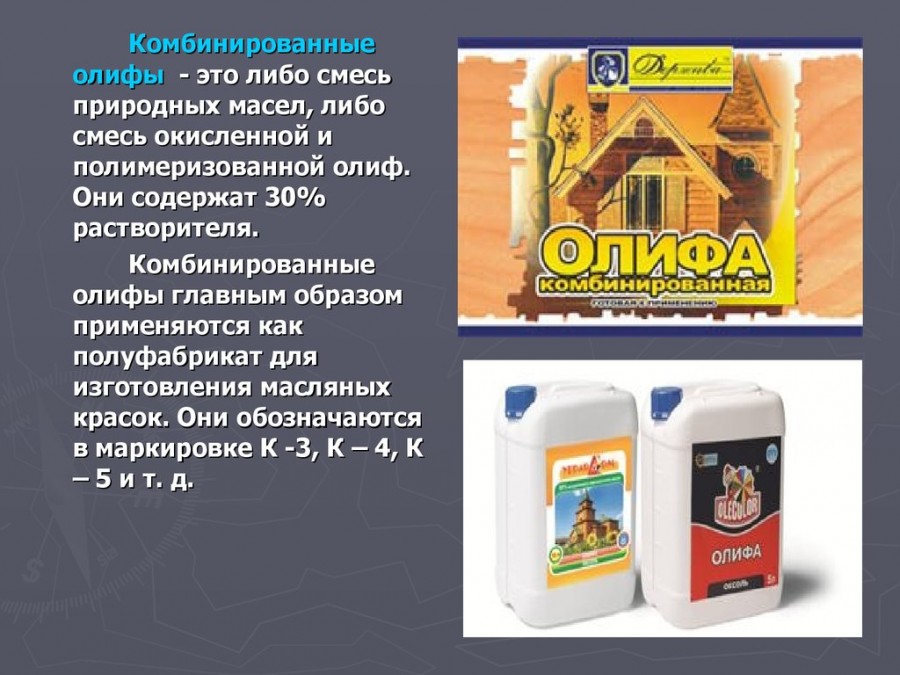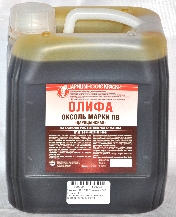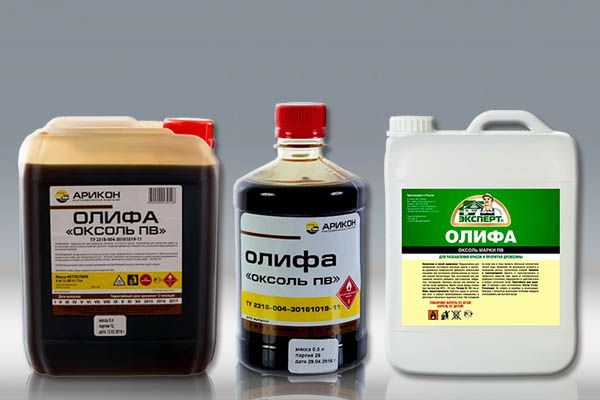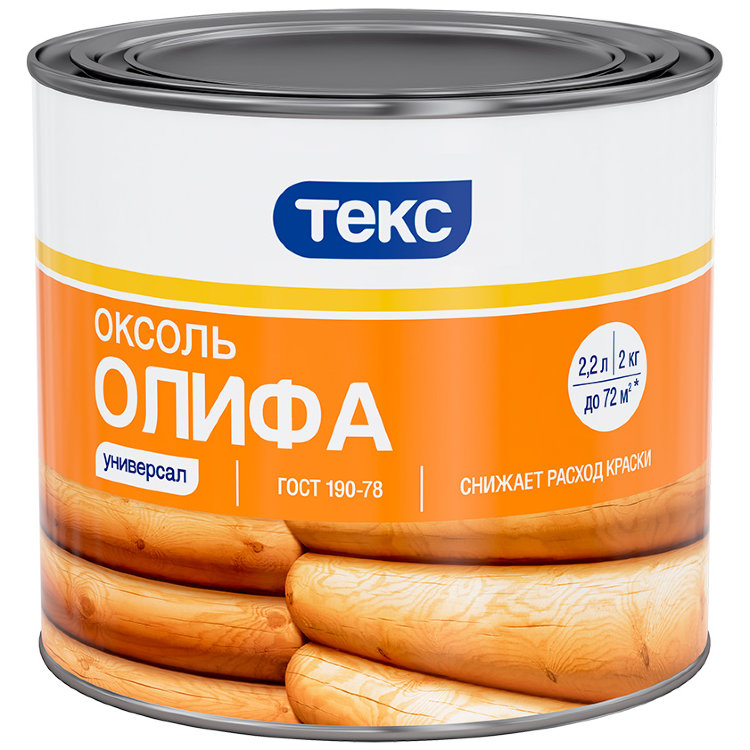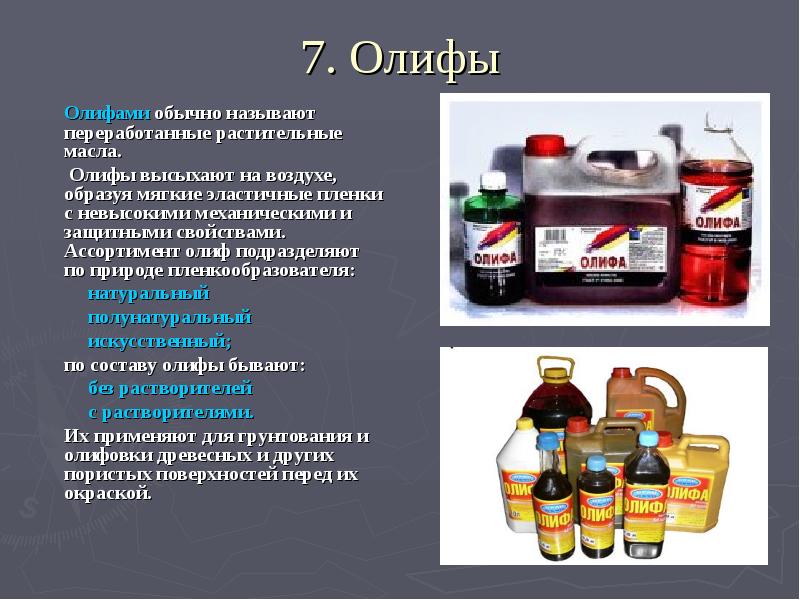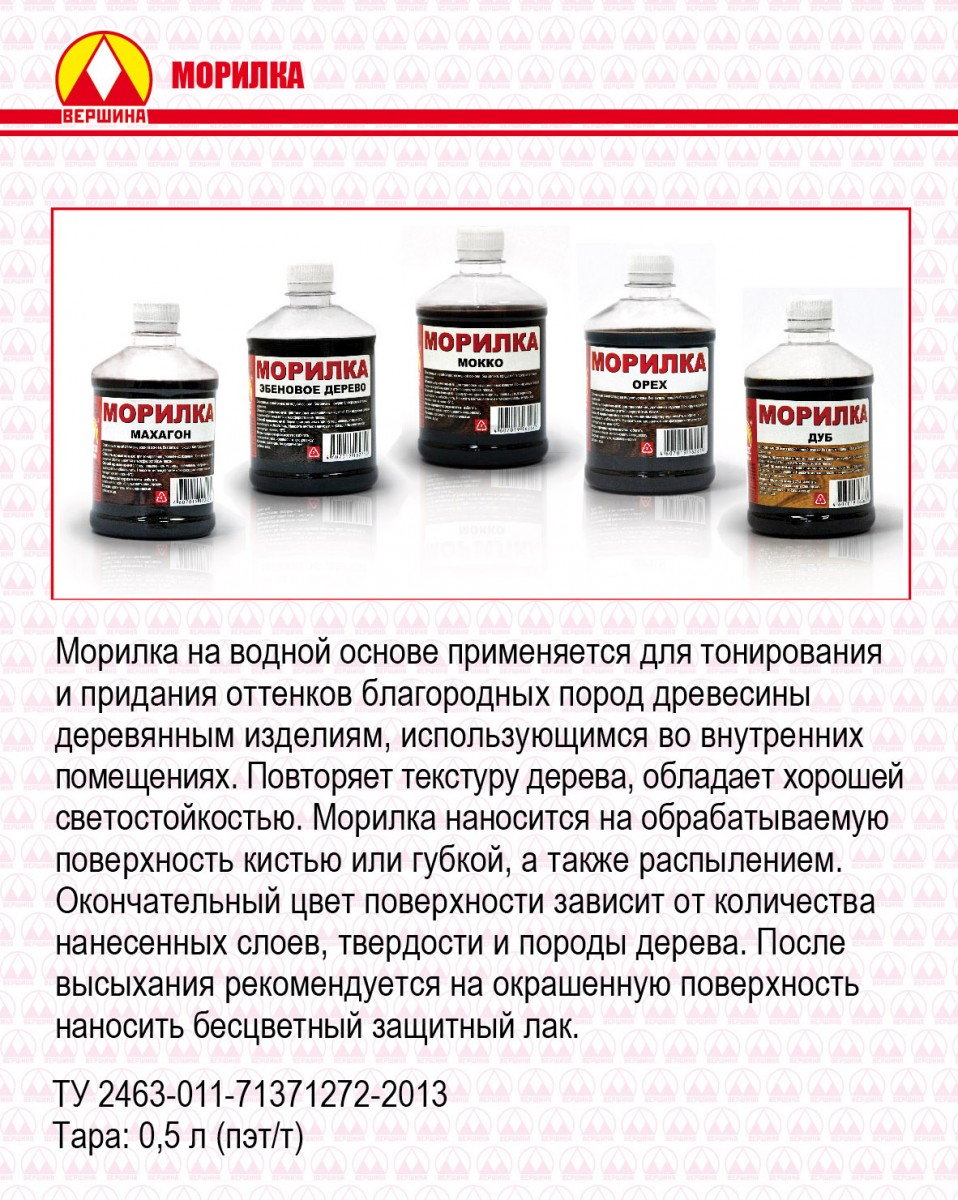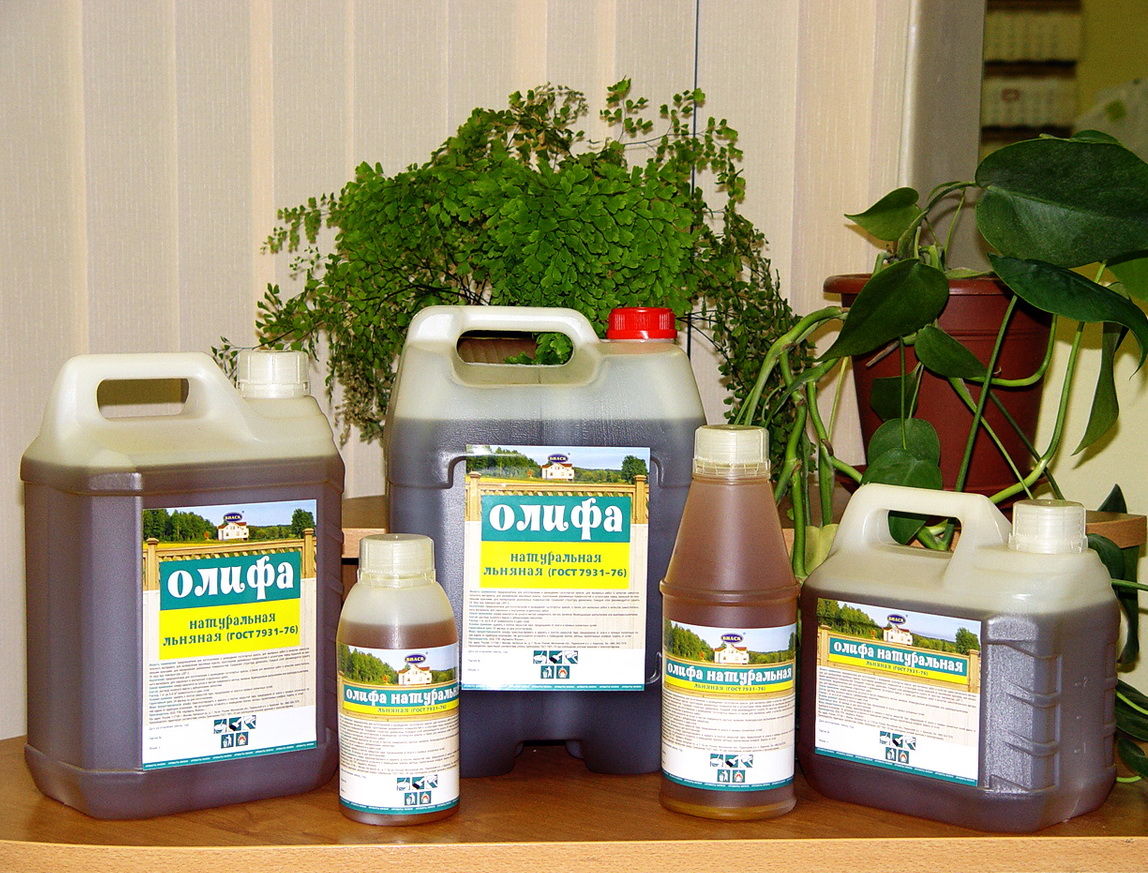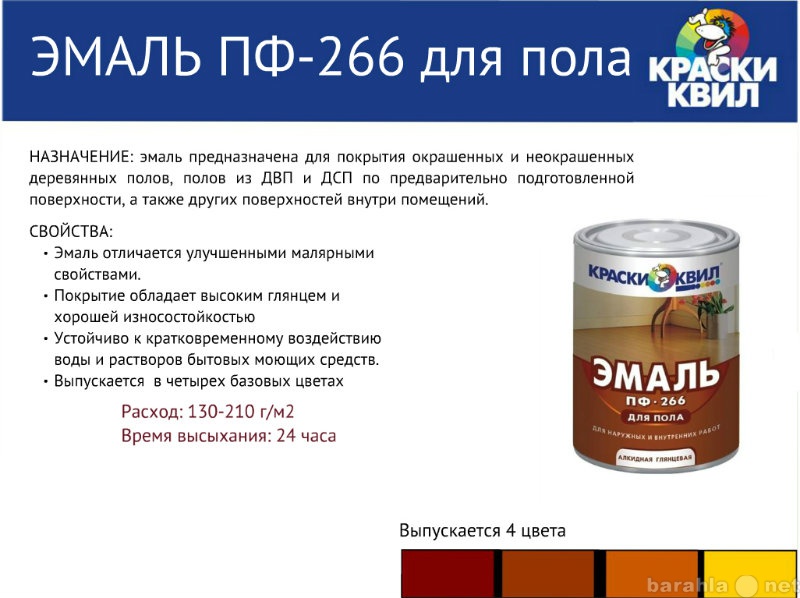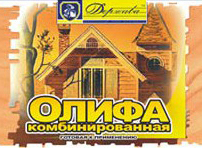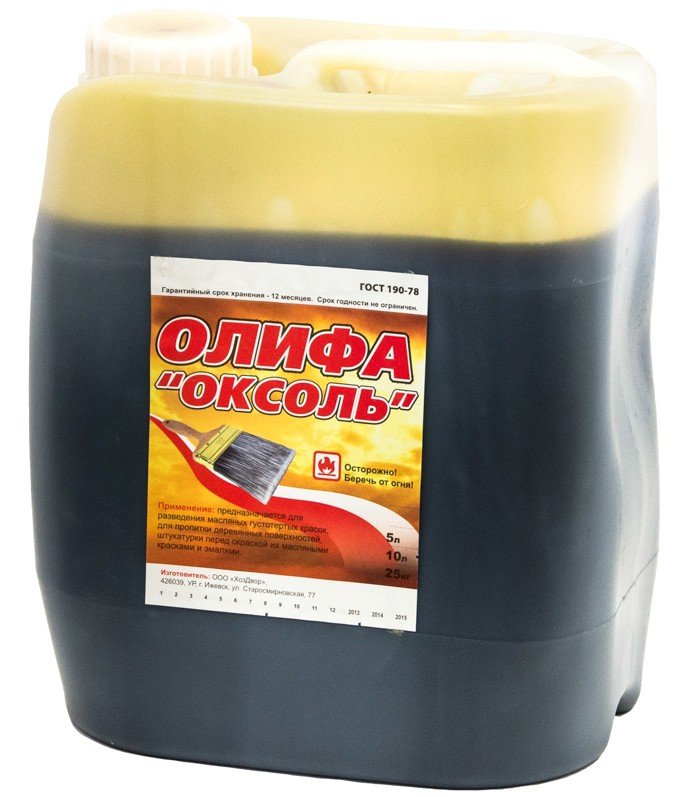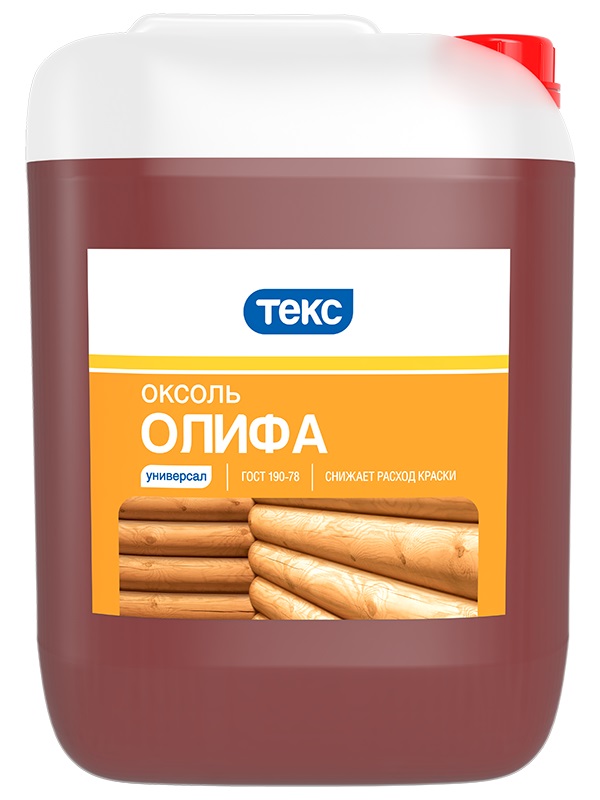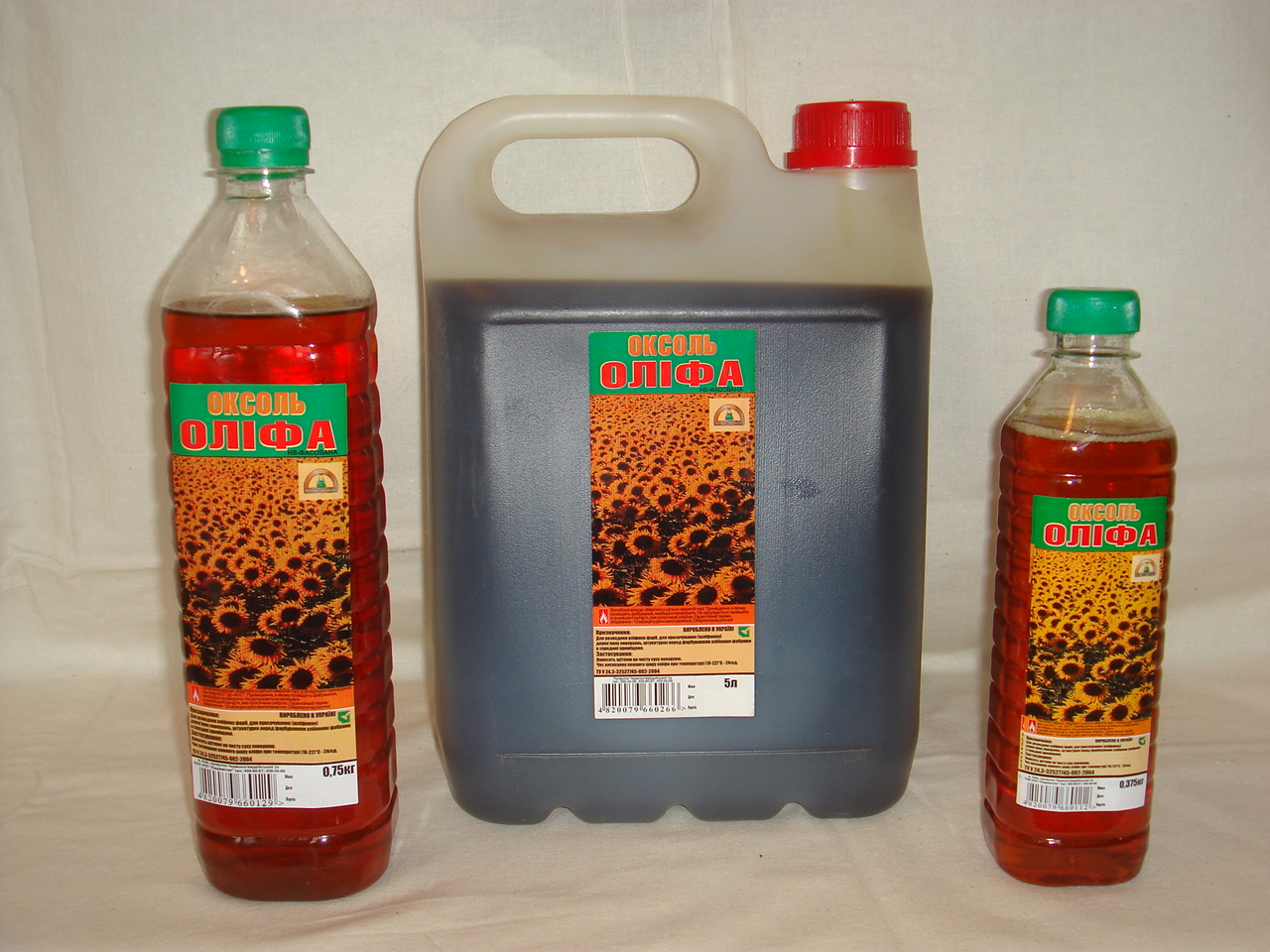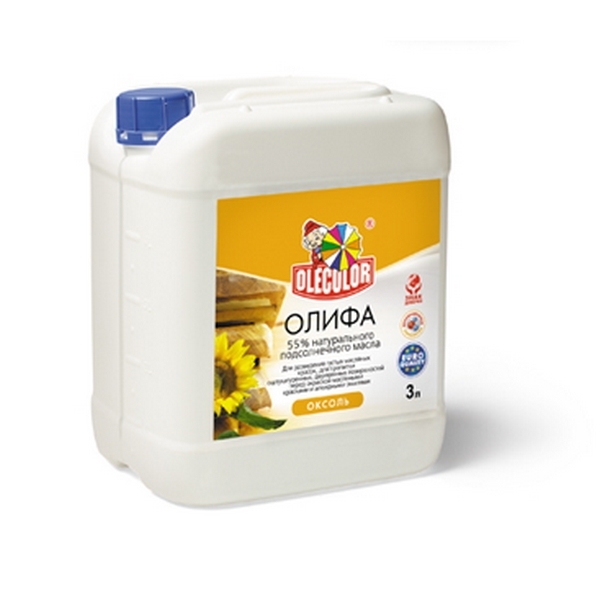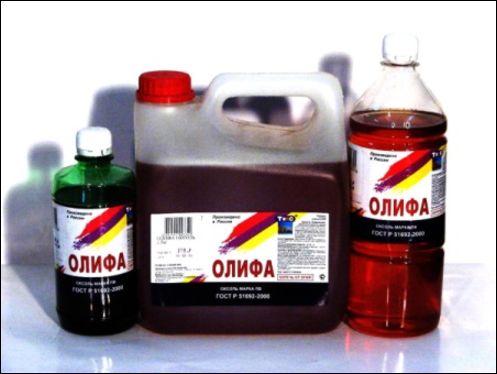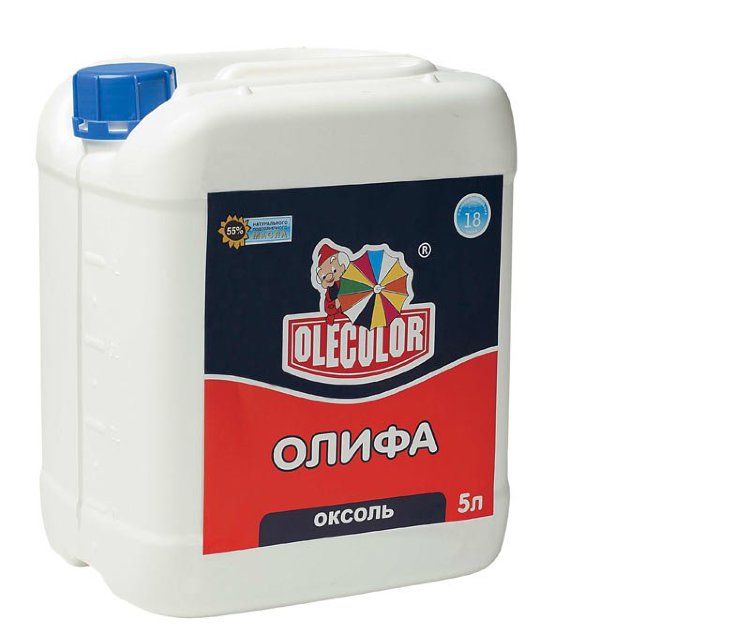Types and brands of oil varnishes
Oil formulations are produced by filtration and special heat treatment from vegetable oils. Desiccants are added to the resulting composition in a small amount. They can be salts of various metals, for example, manganese, iron, lithium, zirconium, cobalt and others.
If the composition of the desiccant contains compounds of several metals, then the drying rate of the drying oil increases significantly.
In oil varnishes, the content of desiccants is insignificant, since with their excess, the coating darkens very quickly and becomes brittle, i.e. begins to collapse.
Subdivided into:
natural. GOST 7931-76, natural drying oil (we carefully study its technical characteristics before buying), consists of plant oils (flax or sunflower). It contains up to 97% of these oils. The remaining 3% is occupied by a desiccant. It is subdivided into polymerized and oxidized (oxidized). The color of oxidized drying oils is slightly darker than that of polymerized ones, and the surfaces covered with them age faster. It has a black-brownish color. It is an opaque liquid with a thick oily consistency with a slight odor. It is used for the preparation of thickly grated paints, as well as for the impregnation of all wood products inside buildings;
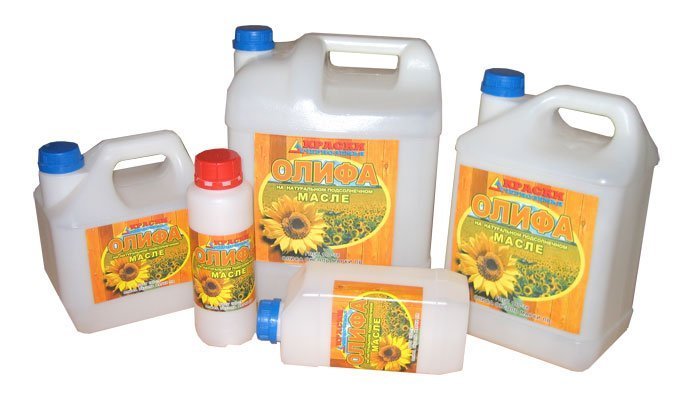
drying oil oxol, its GOST 190 78 (technical characteristics are indicated on the label) - this drying oil differs from natural in that it contains such a solvent as white spirit. Oksol contains 55% oils, 5% desiccant, the rest is white spirit. It has a very strong and unpleasant odor that the solvent gives it. It remains on the treated surface for a long time. Outwardly and in its properties, oxol hardly differs from natural drying oil, but it is much cheaper. Oxol is produced in grades PV and B. They differ in that "B" uses hemp or flax oil, and "PV" uses other oils, including petroleum resin (petroleum oil varnish is a by-product of the petrochemical industry). When using the PV brand, gloves and a respirator must be worn. Varnish of grade B is not used for painting floors. Oksol can be used both inside and outside the building;
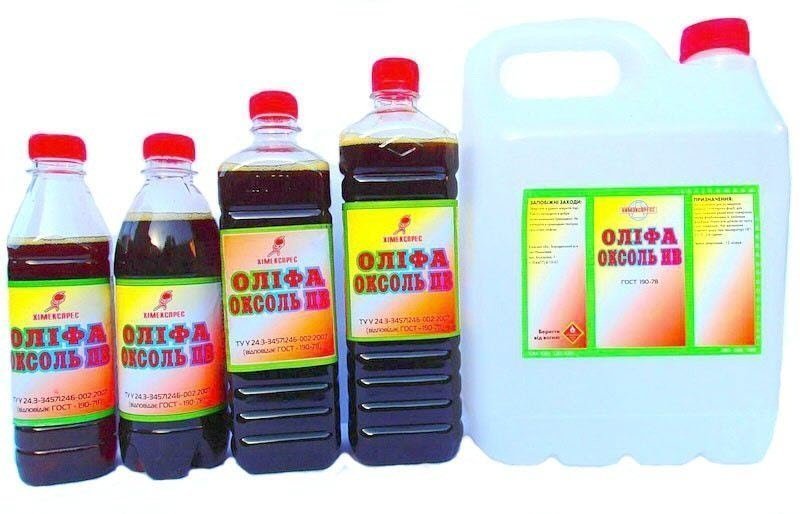
drying oil combined. It is obtained by mixing and oxidizing oils from different plants or differently processed, with the addition of a solvent or synthetic drying oils. Drying time is determined in accordance with GOST 19007. Combined varnish is used mainly for the preparation of paints, and not for their dilution. This type is of several brands: K 2, K 4, K 3, K 5, K 12. Even numbers are used for indoor work, and odd numbers can be used outside. For example, combined drying oil (grade K 3) consists of a small amount of desiccant, solvent (usually white spirit) and drying oils. It is transparent, yellowish in color. Complete drying occurs within 24 hours. It is recommended to use in small portions, as it quickly forms a film. It is used for the preparation of any oil paints and for the impregnation of wooden parts, for mixing plaster. Combined drying oil (grade K 2) slightly differs in color from K 3, it is slightly darker. It is used in the same way as K 3, but for interior work.

They are based on synthetic substances, such as by-products from the processing of shale, oil, gas and other substances with the addition of necessary components. There is no GOST for them, TU is used instead.
Alkyd drying oils are used as a base for the preparation of paints. They are cheaper than oil, which often becomes a decisive factor in their favor. Composite drying oils are rarely used in the production of varnishes and paints, since the resulting coating is of low quality. Due to some toxicity and pungent odor, they are used outdoors.
Synthetic drying oils differ from natural ones by a long drying time, they have no color. But be careful when purchasing such a composition: it may not do without surprises. If there is even a small amount of fuse (vegetable oil sediment), then the drying time of the paint, of which it is a component, can take years. Moreover, such paint may not dry out at all. The presence of fusa can be identified by its characteristic reddish color and the presence of a dark sediment.
Surface treatment
Prepare the surface before drying. To do this, the wood must be degreased, dirt and dust removed from it. The material to be processed must be dry.
Application
Impregnation can be applied using several types of tools to choose from:
- long-bristled brushes;
- roller;
- spray gun;
- rags made of natural fabric.
Below are several ways to impregnate a tree with linseed oil:
- Hot impregnation. Impregnation is carried out in a water bath. The method is especially good for processing small items. We put the material in a vessel with a hot solution, keeping it there for 4-8 hours, and then dry it for 4-5 days. Helpful advice: if you add red lead (2-3% of the total volume) to the composition, the surface will dry much faster - in 2-3 days.
- Oil varnish with kerosene. To create a mixture, we take the indicated components in a ratio of 1 to 1. It is permissible to use both a hot and a cold solution. However, the temperature of the drying oil affects the time during which the wood must be kept. If we are talking about the hot method, it will take only 3 hours, but the cold version will take 1-2 days. Drying time of the coating is 2-3 days.
- Drying oil, paraffin and turpentine. We mix 5 parts of drying oil, 1 part of turpentine and 8 parts of paraffin. And first we dissolve the paraffin in turpentine, for which we use a water bath. Next, add the required amount of drying oil and mix the mixture thoroughly. Apply the hot composition to the wood and wait until it is completely dry (this will take 2-3 days).
- Drying oil with wax. For 20 parts of the base material, we take 3 parts of wax, which we grind beforehand. The surface will dry in 2-3 days.
- Impregnation with a plastic bag. We take an intact bag, pour a little liquid into it. Next, we place a wooden part in the bag. We wrap the product, sealing the hole with tape. Soaking will take several hours.

During soaking, a sufficient amount of drying oil must be applied to the surface. The liquid should saturate the wood well. When the coating is dry, apply a second coat. If necessary, the procedure can be repeated until the wood stops absorbing the solution.
Drying
The drying speed depends on several factors, the main of which are the content of the desiccant, the temperature and humidity of the air, as well as the type and quality of the drying oil.
Impregnations with polymetallic desiccants dry the fastest. For example, natural linseed oil with the addition of lead or manganese desiccant dries in 20 hours and 12 hours, respectively. However, it is worth using both of these metals, and the drying speed will not exceed 8 hours.
Drying time is directly influenced by air temperature and humidity. For example, it will take 50% less time to dry the impregnation with a cobalt desiccant if the air temperature is at least 25 degrees above zero. Even faster (at least 2-3 times) the surface treated with a composition with the presence of manganese desiccant dries. Favorable air humidity is also important, this indicator should not exceed 70%.
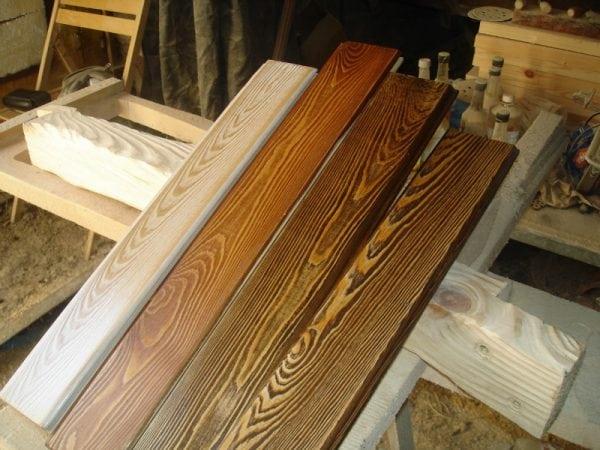
After processing, the wooden part must be placed in a dry and warm place.There should be no drafts in the room. There is no need to specially heat the surface, such actions can only harm.
Advice! Drying oil is a fire hazardous and toxic material, therefore, precautions must be taken when working with it. For protection, it is recommended to use a gown, goggles and a respirator
Keep impregnated containers away from fire, electrical and gas appliances.
How to do it yourself?
If you do not have the opportunity to go to a hardware store or hardware store, but a lot of vegetable oil has accumulated at home, then it is quite possible to make linseed oil with your own hands. Most often, linseed and sunflower oils are used at home.
For home-made impregnation based on linen composition, you will need:
- metal container (basin or bucket, saucepan or ladle);
- heat source (gas or electric stove);
- rosin;
- potassium permanganate;
- personal protective equipment (respirator and rubber gloves).
The technology for making drying oil is simple: for a start, oil is poured into a vessel and gradually brought to a boil - it occurs at t 110 degrees. At this moment, the oil begins to release the water contained in its composition, it begins to evaporate and bubbles form on the surface. In this way, the oil is digested for about 4 hours.
At the same time, it is important that the temperature of the liquid does not exceed 160 degrees.
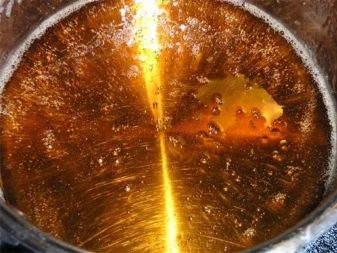
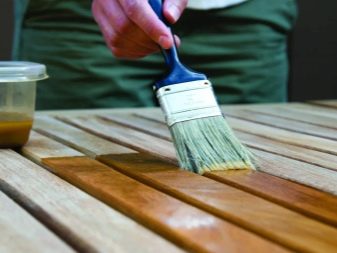
At the end of the evaporation, a desiccant is introduced into the thickened drying oil in a ratio of 30 g of substance per liter of oil. At the moment of adding this component, strong foaming begins, which can lead to injuries and burns. To prevent this from happening, the desiccant is introduced gradually in small portions, after which the heat effect is increased to 200 degrees and the composition is continued to cook for another 3-5 hours.
As the main drier, a mixture of rosin with potassium permanganate in a ratio of 20 to 1 is used, and first the rosin is brought to melting, and only then the permanganate is mixed into it.
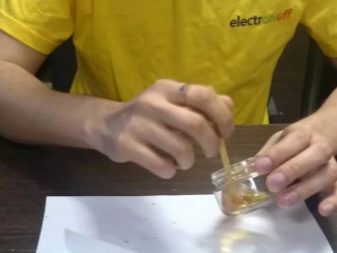
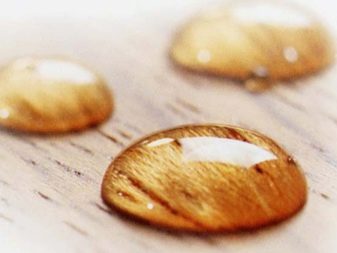
Sunflower drying oil also reliably protects wood or plywood, like flax-based liquid, the only difference is the finishing shade - drying oil on sunflower oil will give a lighter tone.
Whichever method of self-cooking drying oil is chosen, the main principle remains the need to remove all water from the oil and achieve oxidation of all kinds of impurities. This can only be achieved through prolonged heat treatment, therefore it is necessary to be patient and protective equipment and take care of the observance of fire safety rules and good ventilation.

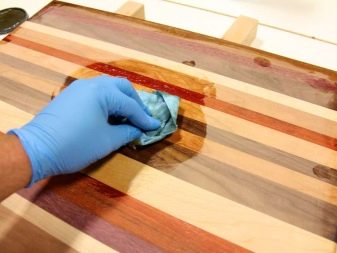
Replacement of drying oil
If there is no drying oil on hand, the surface can be treated with a casein solution. Such a composition will be cheaper than factory impregnation, and in its properties it is not worse at all. In addition, the casein solution dries much faster.
To prepare it, you will need 20 parts of casein, 3 parts of a soap solution and 10 parts of slaked lime. Stir the ingredients thoroughly and add 7 parts of turpentine. The consistency of the solution should resemble thick drying oil. If a sediment appears at the bottom of the container, add a little ammonia to the composition.
Drying oil is an excellent replacement for more modern and expensive methods of wood impregnation and priming. However, do not forget that not all types of this type of impregnation are suitable for use in residential premises.
It is no secret that wooden surfaces treated with varnish or paint have a significant disadvantage - they become cold and lifeless.
If you intend to preserve the beauty of texture, warmth and energy, we recommend that you pay attention to such a material for processing wood as drying oil.
Types: how to choose?
Regardless of the abundance of manufacturers, the production methods are about the same, at least with regard to natural formulations.Vegetable oil is taken, heat treatment is carried out and at the end of filtration, desiccants are introduced. GOST 7931 - 76, according to which such material is produced, is considered obsolete, but there are no other regulatory documents.
The composition of drying oil can include various types of desiccant, first of all, these are metals:
- manganese;
- cobalt;
- lead;
- iron;
- strontium or lithium.
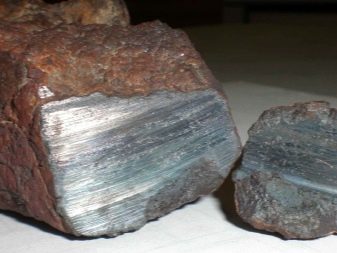

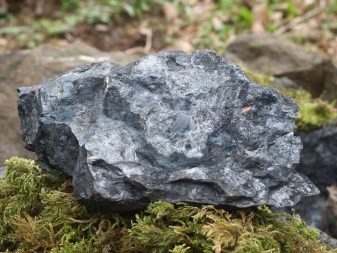

When familiarizing yourself with a chemical recipe, you need to focus on the concentration of reagents. Experts consider the safest cobalt-based driers, the concentration of which should be 3-5% (lower values are useless, and large ones are already dangerous). At a higher concentration, the layer will polymerize extremely quickly even after drying, because the surface will darken and crack. For this reason, painters traditionally use varnishes and paints without the introduction of driers.
Drying oil of the K2 brand is intended strictly for interior finishing work, it is darker than the 3rd grade. The presence of such a substance increases the uniformity and uniformity of drying. A brush is required to apply the material.
Natural
This drying oil is the most environmentally friendly, there is also a drier in it, but the concentration of such an additive is low.
The main technical characteristics (properties) of natural drying oil are as follows:
- share of desiccant - maximum 3.97%;
- drying takes place at temperatures from 20 to 22 degrees;
- final drying takes exactly one day;
- the density of the composition is 0.94 or 0.95 g per 1 cubic meter. m .;
- acidity is strictly normalized;
- phosphorus compounds cannot be present by more than 0.015%.

Subsequent surface treatment with varnishes or paints is not possible. The wood completely retains its decorative parameters.
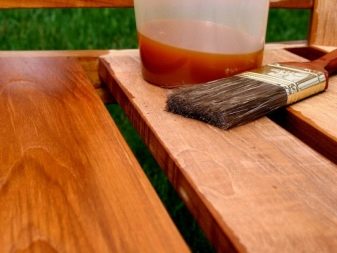

Usage Tips
Drying time is reduced when choosing solutions with the addition of polymetallic desiccants. Natural linen material will dry in 20 hours mixed with lead, and if you add manganese, this period will be reduced to 12 hours. By using a combination of both metals, the wait can be reduced to 8 hours. Even with the same type of desiccant, the actual temperature is very important.
When the air warms up to more than 25 degrees, the drying rate of drying oil with cobalt additives doubles, and sometimes triples with manganese additives. But humidity from 70% dramatically increases the drying time.

In some cases, users are not interested in applying drying oil, but, on the contrary, in an effective way to get rid of it. Such material is removed from wooden surfaces using gasoline, which is rubbed onto the desired area. Wait 20 minutes and the oil will collect on the surface. This technique will only help against the surface layer, the absorbed liquid can no longer be removed outside. White spirit can be considered a substitute for gasoline, the smell of which is somewhat better, and the principle of action is similar.
It is okay to use paint thinner, but not acetone, because it will not work. Linseed oil and wood stain should not be confused, the role of the latter is purely decorative, it has no protective properties.
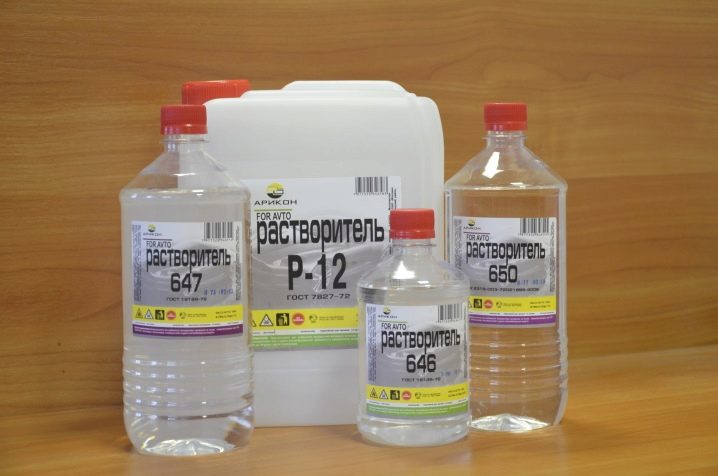
Escaping the smell in the apartment is very important for a large number of users making repairs. It is worth putting furniture in the kitchen or finishing work, as this unpleasant smell begins to haunt the residents for several weeks or even months.
Therefore, after processing, it is necessary to ventilate the room for at least 72 hours, preferably even at night. The room itself needs to be sealed to remove unwanted "odor".
Then newspapers are burned. Better not even burning them in fire, but slow smoldering, because it produces more smoke. Collected smoke must not be ventilated for at least 30 minutes. You should not act in this way if varnishing was carried out.
Without fire, you can get rid of the smell of drying oil with water: several containers with it are placed in the room and changed every 2-3 hours, the release from the unpleasant smell will occur on the second or third day. Putting salt next to the surfaces decorated with linseed oil, it is changed daily, freshness will come on the third or fifth day.
Many are interested in the question of whether it is possible to apply varnish over drying oil or not. Both types of materials form a film. When the varnish applied to the fresh drying oil dries, air bubbles form. Dyes NTs-132 and some other paints are compatible with such impregnation. It is unacceptable to apply the coating at sub-zero temperatures, moreover, oxol is applied at temperatures of at least +10 degrees.
Tile adhesive (waterproof) is made from 0.1 kg of wood glue and 35 g of drying oil. Linseed oil is added to the melted glue and mixed thoroughly. With subsequent use, the ready-made mixture must be heated, it is useful not only for tiles, but also for joining wooden surfaces.
Additional Information
Drying oil can be used for priming not only wooden walls, but also plastered ones. It is also often used as an anti-corrosion coating for metals.
Natural drying oil. It consists of 95% vegetable oil, and only 5% of a desiccant, a special additive that accelerates the drying of the treated surface.
It is unprofitable to use it for external treatment due to high cash costs, while this species does not give one hundred percent protection against fungus and insects.
Oil paints are diluted with natural drying oil and wooden surfaces are primed before painting or varnishing.
Oksol. It consists of 55% of a natural oil component, 40% of a solvent, white spirit, 5% of a desiccant. The scope and properties of this variety of drying oil are the same as natural, only it dries faster and is cheaper.
It also does not give one hundred percent protection. More details for what Oksol drying oil is needed and what it consists of in the video:
Composite linseed oil is made entirely of artificial chemical components, in particular, petroleum resins, has a pungent odor.
Drying oils based on alkyd resins are considered the best. They are not as fatty and expensive as natural drying oils, and not as toxic as composite ones. But, nevertheless, it is better to use them for finishing outdoor country buildings (porch, swing, gazebo, summer kitchen) and for the interior rooms of the country house and apartment.
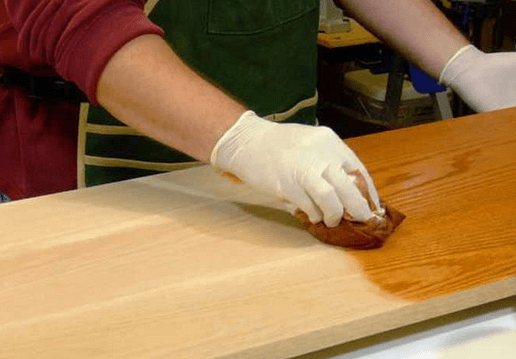
Drying oil is a good alternative to modern expensive means for impregnating and priming wooden surfaces.
But remember that some of its types may be toxic and not suitable for residential use.
If you need guaranteed protection from external factors, drying oil alone is indispensable.
Why do you need drying oil for wood, if today there are a large number of other means for coating wooden surfaces? Drying oil is a traditional paint and varnish material that is widely used in construction and painting works. Since Soviet times, almost all wood was treated only with this oily agent due to its high quality and low price.
Drying oils can be used as an independent protection of wooden products, as a decorative dark coating, as a common primer before finishing painting or filling untreated wooden surfaces, as an additive for the preparation of various paint and varnish compositions.
Modern compositions are divided into several groups:

Features and rules of application
This composition belongs to the category of fast-drying and fast-hardening substances, therefore, it requires adherence to certain recommendations when working with it:
the mixture is sold in a ready-to-use form, but before its direct use, it is recommended to thoroughly mix the drying oil so that the active active ingredients are evenly distributed throughout the liquid;
impregnation can be carried out only on dry, clean and previously degreased surfaces;
it is necessary to apply the solution in a rather thin layer, using a wide brush or a small roller for this;
the air temperature during work should not be below 15 and above 20 degrees, and the humidity should not be more than 75%;
each layer of drying oil dries for about a day, so each new application should be carried out no later than 24 hours later;
it is very important at the end of the work to remove from the room all tools and materials that have come into contact with drying oil;

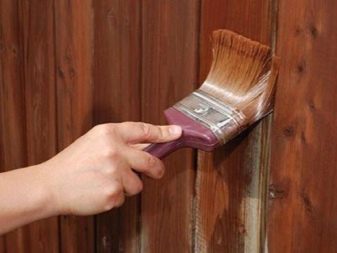
- unspent mixture can be stored for no more than 12 months in a hermetically sealed container;
- during work it is recommended to use a respirator or a protective mask and rubber gloves;
- if the composition gets on the skin or eyes, it must be thoroughly washed off with plenty of water;
- when carrying out work in a closed room, it is imperative to provide access to fresh air;
- drying oil "Oksol" is highly flammable, so it should be used as far as possible from open sources of fire;
- when purchasing this tool, it is imperative to demand from the seller certificates of quality, safety and compliance with the requirements of GOST;
- this composition is allowed to be used for sealing small gaps. To do this, drying oil is mixed with sawdust in equal proportions and applied to the surface to be treated with a spatula.
Compliance with these simple rules and recommendations for the use of drying oil will allow the processing of wooden and putty surfaces as simply, quickly and correctly as possible, and will also ensure a positive work result.
Consumption of combined drying oil on wood
Before applying drying oil, the surface must be treated. First of all, dirt is removed, and the coating is degreased. The presence of moisture is unacceptable.

Drying oil and compositions based on it can be applied with a brush to small surfaces. For larger jobs, it is better to use a spray or roller. We must not forget that the solution must saturate the surface, therefore, when applying it, you cannot save money. For deeper penetration, it is advisable to use hot drying oil. On average, 1 sq. m. leaves approximately 130-160 milliliters of composition.
Usually the coating is applied in 2-3 layers, but their number may vary depending on the needs. Natural drying usually takes no more than a day. The optimum temperature for him is about 20 degrees Celsius. You also need to try to exclude the possibility of drafts.
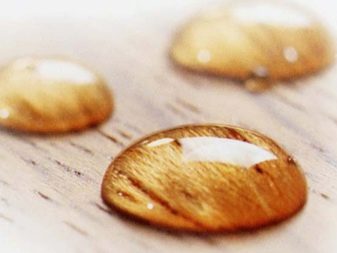
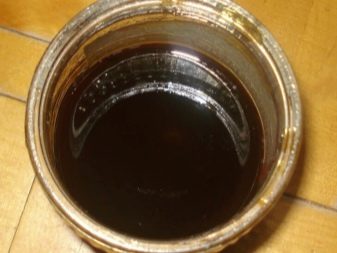
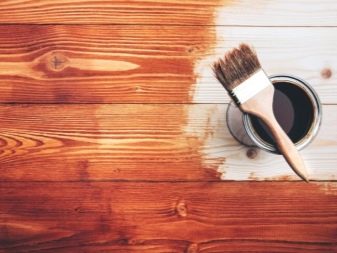
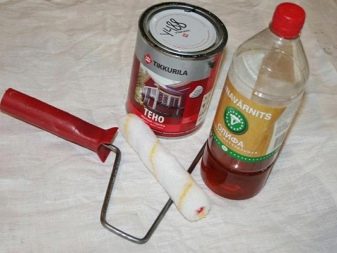
Oil-based formulations can be too thick and difficult to handle. To solve this problem, they can be diluted with linseed oil until the desired consistency is obtained. These manipulations can significantly reduce the consumption of the main product.
After completion of work, all elements must be disposed of, otherwise they can be dangerous due to the fact that they are flammable and explosive materials. The remaining drying oil must be stored in a safe place, avoiding interaction with fire, sunlight and electrical appliances, and protected from moisture. If the solution thickens, it should be diluted with any solvent that can be used with oil paints, in a ratio of 1 to 10.
Drying oil: what is it, composition and properties
Coniferous wood slats, probably pine. The first layer dried very quickly, somewhere in a day. The second layer has been drying for a couple of months already) it is a little sticky to the touch. Why does it take so long to dry? Maybe there are some temperature conditions under which drying will proceed faster? Drying oil produced in Voronezh.
Pinocchio
31.10.2011, 11:12
It seems to me, or does the second layer of drying oil always behave this way?
The first layer dried very quickly, somewhere in a day. The second layer has been drying for a couple of months already) it is a little sticky to the touch. well, this is normal for the second layer of linseed oil (((((the room is more likely wet.
Fusa-based drying oil has a reddish color and dark sediment. if there was natural drying oil, it would dry faster !!!
Obi-Wan Kenobi
31.10.2011, 11:46
well, this is normal for the second layer of linseed oil (((((all the more, the room is rather wet. on the basis of the fusa it has a red color and a dark sediment.If there was a natural drying oil, it would dry faster !!!
The room is not humid, moreover, it is heated. The drying oil has a brownish color, the sediment is not visually identified.
31.10.2011, 14:19
All types of drying oils are used for impregnation and coating of wooden surfaces and various wood products. The resistance of most drying oils to weathering is inferior to other available surface protection means, therefore, the use of drying oils in a pure form (not in paints) for outdoor work is limited. There is no sense at all to use natural drying oil, the most expensive of all drying oils, for outdoor work at the present time - the coating will have to be constantly renewed, which is very expensive and impractical. It is also pointless to use natural drying oil for preliminary coating of surfaces for painting, since cheaper drying oils - oxol and alkyd ones - are better suited for this. Resistance to weathering is maximum for alkyd varnish - the coating with alkyd varnish is approximately twice as durable as any oil varnish. In any case, it is better to use drying oil in outdoor work only as a preliminary coating for subsequent painting. For interior work, from the point of view of ease of use and environmental friendliness, natural oil varnish has an advantage - it practically does not smell, the coating does not emit substances harmful to health, and the work on the coating is also not associated with harm to health. But due to the high cost of this drying oil, oxol (or alkyd drying oils) is more often used for internal work. Due to the odority of oxol, work with it must be done in a well-ventilated area. Until it dries completely, the applied coating continues to emit white spirit vapors, which is why a characteristic smell remains in the room for up to several days. Composite varnish, as a rule, are toxic, and not only during the drying period - a surface covered with composite varnish can continue to smell and release harmful substances for several years after coating. Therefore, composite drying oils can only be used for processing wooden and other porous surfaces during outdoor work, as well as in non-residential premises with good ventilation. They are not recommended for use for interior work in apartments and other residential premises.
Drying oil is a foaming agent made on the basis of vegetable oil and has undergone a special treatment (prolonged overheating by high temperature or oxidation). Also, driers and solvents are added to it, which are used in the manufacture of paints, varnishes, primers and putties. Drying oil is used as a primer for wood and other porous materials before painting, for the manufacture of putty compounds, and also as an independent decorative coating.
According to their classification, they are:
Natural;
Semi-natural;
Combined;
Synthetic.
Depending on which class the drying oil belongs to, it has its own drying time.Knowing the drying time of the drying oil of one class or another, you will be able to work with this material much better. So, if it does not dry out enough, and you start painting the object, the coating will not fit well and will begin to crack over time.
We make drying oil ourselves
If you have a home workshop, you can cook drying oil yourself. Good quality drying oil is obtained from linseed oil. But if there is nowhere to take it, homemade impregnation is made from natural sunflower oil - this is a generally available and cheap raw material.
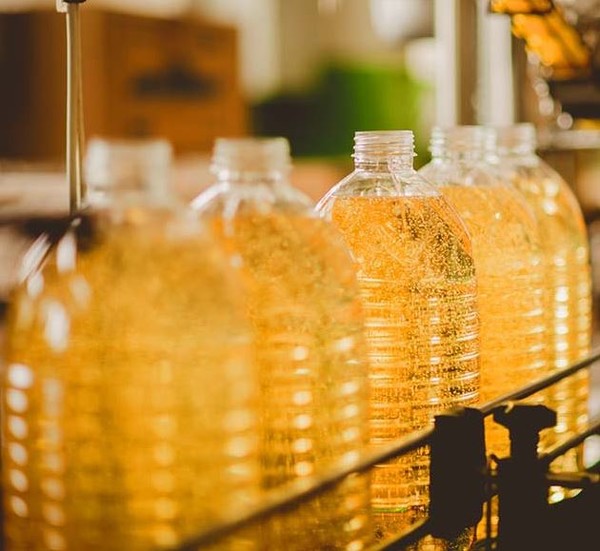
The impregnation preparation process includes three stages:
- preparation of the oil base;
- preparation of desiccant;
- final production of drying oil.
Preparation of the oil base
The container is half-filled with oil and placed on the stove. When the base is heated to 110–120 ˚C, water will evaporate and foam will begin to appear.
Then the foam will subside. Cooking is continued for 3-5 hours, increasing the heating temperature to 270 ˚C. If the edges of a pigeon feather are wrapped in oil, then the heating level is sufficient.
Preparation of desiccant
A drier is an auxiliary reagent that dramatically reduces the drying time of the drying oil. The substance is also added to oil paints.
You can make a desiccant like this:
- 100 parts by weight of rosin is melted at a temperature of 150 ˚C in a separate container.
- 5 parts of manganese peroxide are gradually added to the molten mass after the next settling of the foam.
- The mixture is brought to 200 ˚C and incubated for 3 hours. The material should become transparent.
The final production of drying oil
A desiccant is carefully introduced into the oil base over low heat, observing the level of foam. After the final foam decay, the mixture is boiled for 5-10 minutes
Then the container is removed from the stove and the mixture is left to cool.

